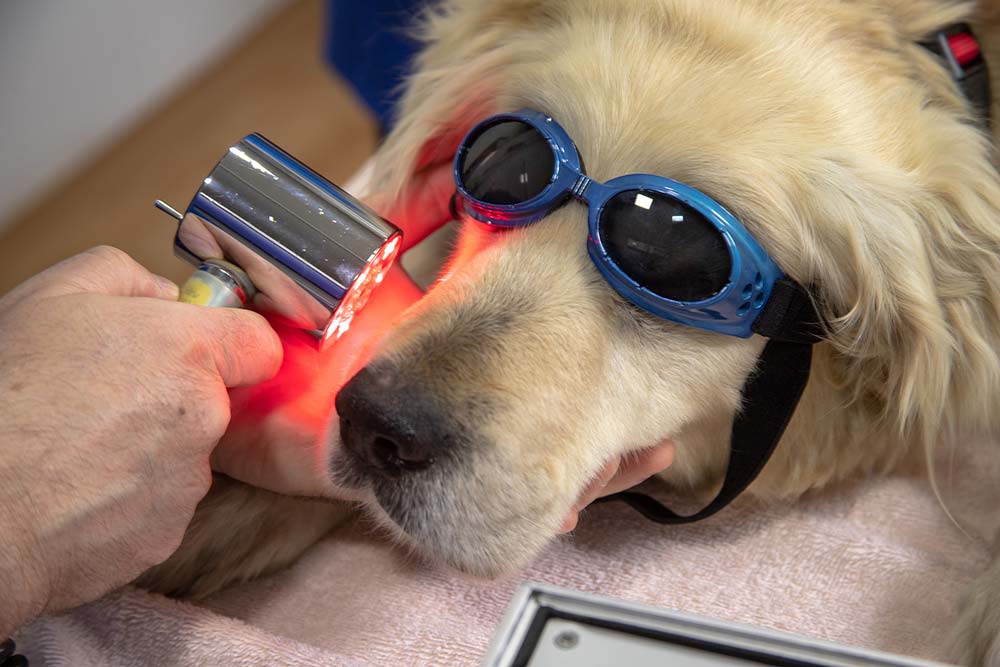Modern veterinary medicine has embraced many technological advancements to improve the health and wellbeing of our pets. One of the most promising and non-invasive treatments available today is laser therapy for dogs. Known for its effectiveness in pain relief, wound healing, and inflammation control, laser therapy has become a popular option among dog owners and veterinarians alike.
In this article, we’ll explore how laser therapy works, its common uses, potential side effects, and alternative treatments to consider. We’ll also touch on professional laser-therapy-dogs services that can help your furry friend lead a more comfortable, active life.
What Is Laser Therapy in Dogs?
Laser therapy, also referred to as cold laser therapy or low-level laser therapy (LLLT), involves the use of a special laser light that penetrates tissues to stimulate cellular activity and promote healing. The laser emits a low-intensity beam that reduces pain, decreases inflammation, and speeds up the repair of damaged tissues.
Unlike surgical lasers, cold lasers do not generate heat or cut through tissue. Instead, they stimulate blood flow and cell regeneration in a completely non-invasive and painless manner.
How Does It Work?
Laser therapy uses specific wavelengths of light to trigger a photochemical reaction in the cells. This process, called photobiomodulation, increases mitochondrial activity and ATP production, which helps cells function more efficiently and repair themselves faster.
The benefits include:
- Improved circulation
- Enhanced tissue healing
- Reduction in inflammation
- Pain relief
- Muscle relaxation
Most dogs find the treatment calming, and sessions typically last 5–20 minutes depending on the condition being treated.
Common Uses of Laser Therapy in Dogs
Laser therapy is highly versatile and is used to treat a variety of conditions in dogs, including:
1. Arthritis and Joint Pain
Laser therapy is widely used to relieve the pain and stiffness caused by osteoarthritis, a common condition in aging dogs. It helps reduce inflammation in joints and improves mobility.
2. Post-Surgical Healing
After surgery, laser therapy can speed up recovery by promoting faster healing, reducing inflammation, and minimizing post-operative pain.
3. Wound and Injury Healing
It accelerates the healing of cuts, abrasions, surgical incisions, and traumatic injuries, making it ideal for active or injured dogs.
4. Hip Dysplasia
Dogs suffering from hip dysplasia can experience improved movement and pain relief with consistent laser therapy sessions.
5. Intervertebral Disc Disease (IVDD)
Laser therapy can help manage pain and inflammation associated with spinal disc issues in dogs.
6. Ear Infections
Laser light helps reduce inflammation and discomfort associated with chronic ear infections, especially in breeds prone to this condition.
7. Lick Granulomas and Hot Spots
Laser therapy soothes irritated skin and speeds up healing in conditions like lick granulomas, hot spots, and dermatitis.
Are There Any Side Effects?
Laser therapy is considered very safe when administered by a trained veterinary professional. However, as with any treatment, there are a few considerations and rare side effects:
✅ Common Safety Features
- No sedation required
- Non-invasive
- No known long-term side effects
- Generally well tolerated by dogs
⚠️ Potential Concerns
- Overuse of laser in one area could cause thermal damage, although this is extremely rare with modern devices.
- Avoid use over cancerous tumors, as laser therapy may stimulate blood flow and accelerate cell growth.
- Eye protection is necessary for both the dog and the practitioner during the session.
Your veterinarian will assess your dog’s health and determine whether laser therapy is appropriate based on age, condition, and medical history.
How Many Sessions Are Needed?
The frequency and number of sessions depend on your dog’s condition:
- Acute injuries: 2–3 sessions per week for 1–2 weeks
- Chronic conditions: Long-term plans with weekly or biweekly sessions initially, followed by maintenance
- Post-surgery: Daily or every-other-day sessions for the first week or two
Improvement is often seen within the first few sessions, although long-term conditions may take time to respond fully.
Professional Laser-Therapy-Dogs Services
If you’re considering laser therapy for your pet, it’s essential to choose a reputable service provider. Look for laser-therapy-dogs services that offer:
- Experienced veterinary staff trained in laser therapy techniques
- Modern, high-quality equipment approved for animal use
- Customized treatment plans tailored to your dog’s specific health condition
- Affordable packages for long-term treatments
- Positive reviews and testimonials from pet owners
Some clinics also offer mobile services or at-home treatments for dogs who may be anxious in clinical settings. Ask your local vet if they provide or can refer you to a trusted laser therapy service near you.
Alternatives to Laser Therapy for Dogs
While laser therapy is effective, it’s not the only treatment option for managing pain and inflammation in dogs. Depending on your dog’s condition, your vet may suggest alternatives or combine them with laser therapy:
1. Medications
- NSAIDs (non-steroidal anti-inflammatory drugs)
- Pain relievers like tramadol or gabapentin
- Steroids (in severe cases)
⚠️ Long-term use can have side effects such as liver or kidney damage.
2. Physical Therapy and Hydrotherapy
Exercise, stretching, underwater treadmill therapy, and massage can help restore strength and movement, especially after injuries or surgery.
3. Acupuncture
Veterinary acupuncture uses tiny needles to stimulate nerves and improve healing and blood flow, often used alongside laser therapy.
4. Nutritional Supplements
Supplements like glucosamine, chondroitin, omega-3 fatty acids, and turmeric can support joint health and reduce inflammation.
5. Regenerative Medicine
Newer therapies like stem cell therapy and platelet-rich plasma (PRP) therapy are showing promise in managing joint issues and soft tissue injuries.
Is Laser Therapy Right for Your Dog?
Laser therapy is suitable for most dogs, including:
- Seniors with mobility issues
- Dogs recovering from surgery
- Pets with arthritis, hip dysplasia, or soft tissue injuries
- Dogs unable to take traditional medications due to allergies or sensitivities
However, it’s always best to consult your veterinarian before beginning any new treatment. They will perform a thorough evaluation and recommend the most appropriate therapy based on your dog’s health condition.
Final Thoughts
Laser therapy is a powerful and safe tool in the modern veterinary toolkit, offering non-invasive relief for dogs suffering from pain, inflammation, and injury. It enhances healing, improves mobility, and often reduces the need for medications, making it an excellent option for long-term health management.
If you’re looking for professional laser-therapy-dogs services, talk to your local veterinarian or search for certified clinics that specialize in therapeutic laser care. Whether used alone or alongside other treatments, laser therapy can help your dog live a happier, healthier, and more comfortable life.











